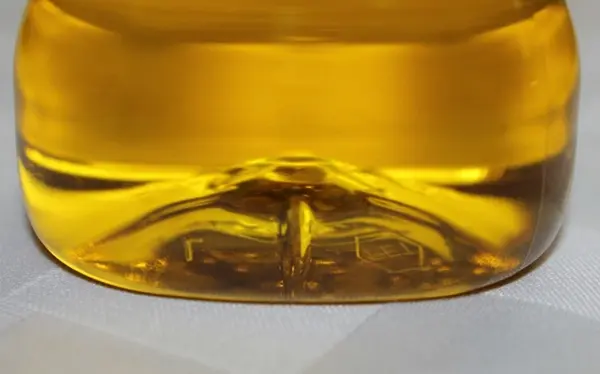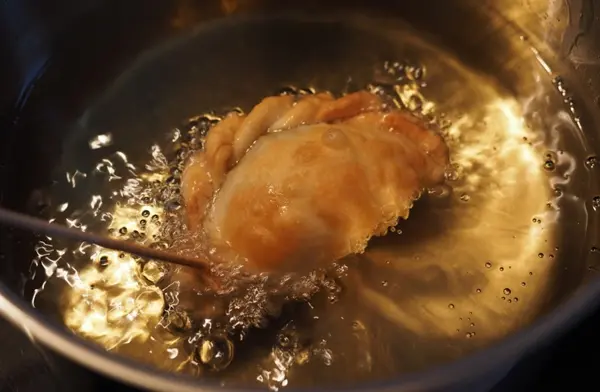Biodiesel is a renewable fuel and an ideal alternative to fossil diesel, helping reduce greenhouse gasses while supporting local economies. Edible oils are one of the primary raw materials used for production, yet their high FFA content makes them susceptible to transesterification reactions that lead to saponification.
Thus, researchers have explored non-edible oils and fats as cost-cutting feedstocks for production. In the following article, I’ll explain how the UK is handling this new technology and what we can look forward to.
How the UK Masters Biodiesel Production from Castoff Cooking Oils
Process
Biodiesel is an eco-friendly alternative to fossil diesel made from vegetable oils and fats such as rapeseed, sunflower, or soybean oils and fats. Production takes several forms; one common one being using waste cooking oil (WCO). A process called transesterification converts WCO to biodiesel by combining fatty acids with alcohols.
WCO production provides a sustainable fuel that can power trucks, boats and other vehicles without emitting greenhouse gasses; it can be recycled after use and rapidly degrades compared to fossil diesel. However, producing biodiesel from waste materials presents its own set of unique challenges.
Current UK WCO collections largely go to waste treatment plants and sewerage systems for processing; estimated amounts of FOG can reach into these systems and cost taxpayers millions annually. But with its cutting-edge technology, RFTO can take steps to prevent such waste by turning it into fuel for recycling purposes.
One way of producing it is through pyrolysis, which involves heating oil at high temperatures in an oxygen-free atmosphere and producing many byproducts, including glycerin and sediment. Conversely, transesterification uses more cost-effective raw materials that produce significantly fewer byproducts.
Another advantage of this process is its versatility: it can be conducted on a small scale without needing complex equipment. Therefore, it can help save on electricity bills and decrease carbon footprint, without emitting toxic fumes that could result in accidents.
At the center of production lies selecting an oil or fat as its starting point. Straight vegetable oils and animal fats such as tallow or waste cooking oils provide suitable feedstocks. Vegetable oils like rapeseed, soybean, and sunflower hold particular promise for production.

Equipment
Production as an alternative fuel has attracted researchers’ consideration, due to the need for alternatives to petroleum diesel fuel. Constructed from triglycerides derived from vegetable oils and animal fats, biodiesel can be produced through transesterification or enzymatic catalysis processes; however, its commercialization remains limited due to costly production procedures requiring high-grade feedstocks.
Thermal cracking (pyrolysis) is another means for producing biodiesel. This method involves heating organic material at high temperatures in an oxygen-free atmosphere to decompose it into short-chain hydrocarbons and carbon monoxide, producing fuel similar to petroleum diesel but without being as clean and sustainable. This approach is expensive while emitting harmful emissions into the environment.
Researchers have recently investigated waste cooking oil (WCO) as a raw material for production, conducting laboratory-scale experiments to examine its physical and chemical properties as well as its reaction with methanol. Results demonstrated that quality of production depended on catalyst type and reaction conditions as well as ratio between WCO to Methanol, with latter having an enormous influence.
Researchers have devised a solution to address this low viscosity by developing “thermal re-esterification.” Essentially, this technique involves heating FAME to their boiling points to improve fluidity while simultaneously creating soap with water for improved viscosity of mixture. To meet these requirements, special reactors heat FAME until its boiling point, creating more fluidity that improves viscosity of biodiesel mixture.

Raw Materials
Biodiesel is a form of diesel fuel made from renewable sources such as vegetable oils or animal fats/oils/tallow/waste cooking oils, offering an alternative to fossil fuels while helping reduce greenhouse gas emissions. Production methods vary; depending on which materials are being used as an input. Transesterification is the process by which these oils are transformed into fuel.
WCO contains high levels of free fatty acid (FFA), making it difficult for basic transesterification without saponification. To alleviate this difficulty, researchers have explored ultrasound systems as a solution. Ultrasound waves penetrate molecules directly, producing heating effects at molecular level which distribute heat evenly – providing another approach to improve biodiesel produced from low-cost raw materials.
WCO typically contains monounsaturated and polyunsaturated fatty acids; however, around 8% are saturated depending on its source oil, amount of soaps or contaminants present, handling conditions during storage, production process or viscosity requirements.
Producing biodiesel from Castoff Cooking Oils involves various methods, such as transesterification with alkali or acid catalysts. Each has their own set of advantages and disadvantages; WCO biodiesel in general tends to be more cost-effective than other forms of biofuel, with less pollution emission as a result of using it and helping reduce waste generated from food processing facilities.

Costs
Production’s primary expense is oil feedstock costs, accounting for an estimated 70% of overall costs. Small-scale producers may be able to acquire feedstocks such as restaurant waste greases and animal fat from rendering plants without incurring extra expenses; however, if they need to purchase oilseeds or vegetable oils then costs could increase dramatically.
Another crucial consideration is the cost of glycerin, the byproduct of production. Although useful as fuel, according to Syntech its disposal or sale can be challenging or hazardous, increasing safety costs. Sometimes processors must pay someone else to transport and dispose of this substance – which may become costly.
WCO, also known as waste cooking oil, is one of the main lipid raw materials for production. WCO is an inedible residue generated from restaurants and households; its composition includes both triglycerides and free fatty acids which have undergone physical-chemical modifications, making it suitable as biodiesel raw material.
Biodiesel is an alternative fuel made of vegetable or animal fats that uses vegetable-derived sulfates as its basis, providing a much cleaner option than fossil-based fuels in terms of emissions and user safety.
Biodiesel offers many advantages over petroleum-based fuels, while simultaneously creating jobs in rural areas. Although production can present several challenges, there are incentives that may help offset some costs such as tax credits or rebates or direct payments to farmers; either way, these programs encourage large scale investment into biodiesel development.


0 Comments